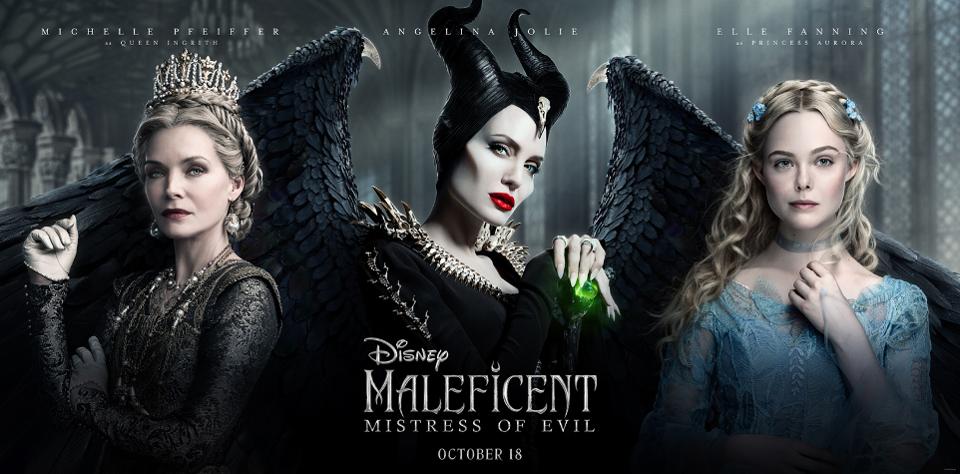[Spoiler Alert!]
Sporting an obsession for the original Maleficent, my opinion is biased. But with such a passion for the first movie, my analysis of this sequel is thorough and credible.
To start, the first movie of Maleficent introduces the main character, a fairy, (Maleficent) as a young girl. With enormous black wings, she protects the magical creatures from the human kingdom outside their beloved enchanted forest kingdom of Moors.
Young Maleficent (played by Jenn Murray) falls in love with a human; he betrays Maleficent by taking her wings in order to become king of the bordering human kingdom. After that, she not only hates humans and their existence, but her heart is choking with revenge. Everything changes once she realizes the child of the one she had loved, King Stefan (and another woman, the princess) was the little girl destined to set things right between kingdoms. A new story line comes to life in the return of Maleficent. 
The magical movie of Maleficent II: Mistress of Evil was released October 18th this year, five years after the first movie.
Maleficent II begins with the audience seeing for themselves how Maleficent (played by Angelina Jolie) is bestowed with the same unchanging role as guardian of the Moors. She kills intruders from the kingdom next door, and ensures that the hateful relationship between humans and fate remains in place. It is Aurora (played by Elle Fanning), Maleficent’s adopted human daughter, the same girl destined to bring peace to the two kingdoms, daughter of King Stefan (her past lover), who wants different than this – she wants peace.
Progressing from a quiet love in the first movie, Phillip, a young prince, and Aurora grow closer than ever. From the way Phillip looked at Aurora since they met, she knew she was going to marry him. And finally, he asked.

Aurora, of course, said yes. Her prompt response created an existing metaphorical and literal bridge between the Moors and the human kingdom. However, a new, hostile character tears through the threads that hold the bridge together. Phillip’s poisonous mother, Queen Ingrith (played by Michelle Pfeiffer).
Her urgency to invite not only Aurora, but Aurora’s mother, Maleficent, to celebrate the marriage puts the viewers on edge. The obvious tension when the two mothers are introduce relatively lightens the tone by Phillip’s father. The joyful man wants nothing more than harmony between the kingdoms; his joy for Phillip and Aurora’s marriage is infinite. His fate is what turns the key to the plot line.
Overall, the common theme found in Maleficent II is clearly the concept of personal development seen in multiple characters. Many characters change sides and explore the idea that their enemies are not bloodthirsty. Not only do some characters change their perspective on good and bad, some previously-vain characters risk it all for the ones they insisted didn’t matter to them. Maleficent plays a large part among these characters. To keep from spoiling all surprises, I’m will say… her ancestral roots save her from going down the wrong path.
Small additions to scenes add a new level of dark to Queen Ingrith’s personality. One large hint to the queen’s wickedness is her way of entering her secret layer: in her dressing room, she wraps her hands around the mannequin’s head and… twists. The neck of the human-sized doll is completely bent. That is how she conspires so inconspicuously. To review, the viewers are first introduced to Queen Ingrith and watch Maleficent stiffly greet her at the dinner in the castle. The small incline of Maleficent’s wings at the table display the aggression she is ready to let out, and the pride that the queen seeks to destroy. The green flow of magic like fiery tears seeps from Maleficent’s eyes. There is so much tension in the scene (you could cut it), I highly recommend for you to see for yourself. Some say the first movie is better. From where I stand, Maleficent II will never be second best.
The reason Maleficent II is so incredibly popular is the inclusion of every single character into the plot line. No matter how small they are, or how short their lives were, they molded the story into a masterpiece of loss, courage, and morality.





